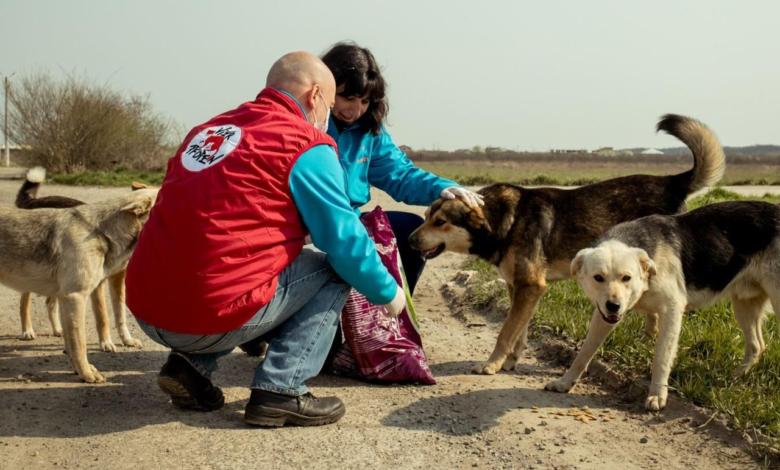
How to Help Stray Animals in Your Community Responsibly
Helping stray animals responsibly starts with compassion and action. Learn humane ways to feed, shelter, and protect community strays sustainably
Helping stray animals in your community responsibly is a compassionate act that requires careful consideration to ensure both their welfare and the well-being of the neighborhood. Stray dogs, cats, and other animals often struggle with hunger, disease, and harsh weather, relying on the kindness of humans for survival. However, without proper planning, well-intentioned efforts can sometimes lead to unintended consequences, such as overpopulation or public health concerns. By taking a structured and ethical approach, you can make a meaningful difference while maintaining harmony between animals and residents.
Responsible care for stray animals begins with understanding their needs and the most effective ways to assist them without disrupting the community. Whether through feeding programs, medical aid, or adoption initiatives, every action should prioritize long-term solutions over temporary fixes. This guide explores practical steps you can take—individually or as part of a group—to support stray animals in a way that is sustainable, safe, and beneficial for all. From proper feeding techniques to collaborating with local shelters, you’ll learn how to turn compassion into impactful action.
How to Help Stray Animals in Your Community Responsibly
Understanding the Stray Animal Crisis
Stray animals are a common sight in many communities, often abandoned or born on the streets without proper care. These animals struggle to survive, facing malnutrition, injuries, and diseases. While their presence can sometimes lead to conflicts with humans, the root cause is often human negligence—irresponsible pet ownership, lack of spaying/neutering, and abandonment. Addressing the stray animal problem requires a balanced approach that prioritizes their welfare while considering public health and safety.
Providing Food and Water Responsibly
One of the most immediate ways to help stray animals is by providing food and clean water. However, this must be done thoughtfully to avoid dependency or attracting too many animals to one area. Instead of leaving large quantities of food that may rot or attract pests, offer measured portions at consistent times. Dry kibble is a good option as it doesn’t spoil quickly. Always place food and water in quiet, safe spots away from traffic to protect the animals from harm.
Shelter and Protection from Harsh Weather
Stray animals suffer greatly during extreme weather—scorching heat, heavy rain, or freezing winters. Building or providing simple shelters can save lives. You can create DIY shelters using insulated boxes, wooden crates, or even repurposed materials. Ensure the shelter is waterproof, elevated from the ground, and placed in a secure location. Community efforts can also establish designated feeding and shelter zones where animals are safe without causing public disturbances.
Medical Care and Vaccination
Here’s a detailed breakdown of key points regarding medical care and population control for stray animals:
Addressing Immediate Medical Needs
Injuries & Infections: Strays often suffer from untreated wounds, abscesses, or fractures due to accidents, fights, or abuse. Parasite Control: Many harbor fleas, ticks, or internal worms, leading to anemia and disease. Basic deworming and anti-parasitic treatments can save lives. Emergency Care: If you find a severely injured animal, contact a rescue group immediately. Never attempt to treat serious wounds yourself without professional guidance.
Vaccination
Rabies Prevention Rabies is fatal and transmissible to humans. Community vaccination drives protect both animals and people. Core Vaccines include Distemper, parvovirus, and feline leukemia vaccines are essential to prevent deadly outbreaks in stray populations. Mobile Clinics Support or volunteer with organizations that provide on-site vaccination services in high-risk areas.
Spaying/Neutering: The Humane Solution
Population Control A single unsterilized pair of cats can produce thousands of descendants in years. Spay/neuter breaks this cycle. Health Benefits Sterilization reduces risks of cancers and infections (e.g., pyometra in females) and curbs aggressive behaviors. Cost-Effective Preventing litters is cheaper than managing endless stray births. Advocate for subsidized or free sterilization camps.
Trap-Neuter-Return (TNR) Programs
How It Works Strays are humanely trapped, sterilized, vaccinated, and returned to their territory. This stabilizes populations without euthanasia. Community Impact TNR reduces nuisance behaviors (e.g., yowling, spraying) and prevents new litters from suffering on streets. How to Help Volunteer with TNR groups, donate supplies (traps, carriers), or foster animals post-surgery during recovery.
Long-Term Strategies
Collaborate with Municipalities: Push for government-funded ABC (Animal Birth Control) programs under animal welfare laws. Educate Locally: Teach communities that sterilization isn’t cruel but prevents suffering. Counter myths (e.g., “Animals need one litter”). Post-Operation Care: Ensure neutered strays have clean release sites and monitor them for complications like infection.
Adoption and Fostering
Not all stray animals are feral—many are abandoned pets that can be rehabilitated and rehomed. If you find a friendly stray, check for identification or post about them on local lost-and-found pet groups. Fostering provides temporary care until a permanent home is found, reducing the burden on shelters. Adoption is the most sustainable solution, giving an animal a second chance at life. Encourage your community to adopt rather than buy pets to reduce demand for breeding while helping strays.
Community Involvement and Education
Long-term solutions require collective effort. Organize or participate in awareness campaigns about responsible pet ownership, the importance of spaying/neutering, and humane stray animal management. Schools, local businesses, and municipal bodies can collaborate on initiatives like community feeding programs, vaccination camps, and adoption drives. Educating children about compassion toward animals fosters a more empathetic future generation.
Working with Local Authorities and NGOs
Animal welfare NGOs often have the expertise and resources to manage stray populations effectively. Volunteer with them, donate, or help organize fundraising events. Municipal corporations in many areas have animal birth control programs—advocate for better implementation of these policies. Reporting cases of cruelty or neglect to authorities ensures that legal protections for animals are enforced.
Avoiding Harmful Practices
While helping strays, avoid actions that may unintentionally harm them or the environment. Overfeeding can lead to obesity and health issues. Feeding inappropriate food like chocolate (toxic to dogs) or bones (choking hazard) should be avoided. Relocating animals disrupts their territory and can put them at greater risk. Always prioritize humane and scientifically backed methods over quick fixes.
Read More: Best Homemade Pet Food Recipes for a Healthier Diet
Conclusion
Helping stray animals in your community responsibly is not just an act of kindness, but a commitment to creating a more compassionate and balanced environment for both animals and humans. By following ethical practices such as organized feeding, supporting spay/neuter programs, and promoting adoption. you can make a lasting difference in the lives of these vulnerable creatures. Remember, even small, consistent efforts contribute to a larger solution, ensuring that stray animals receive the care they deserve while maintaining harmony in your neighborhood.
Ultimately, responsible care for stray animals requires community involvement, education, and collaboration with local animal welfare organizations. By raising awareness, volunteering, or simply being mindful of how you assist strays, you help build a society where animals are treated with dignity. Every step taken toward their well-being reflects our shared humanity, proving that compassion, when guided by knowledge and responsibility, can transform lives one paw at a time.
FAQs
What is the best way to feed stray animals without causing problems?
Provide measured portions of dry kibble in a quiet, safe location to avoid attracting pests or overpopulation in one area.
How can I help an injured stray animal?
Contact local animal rescue groups or veterinarians who may offer free or low-cost treatment for injured strays.
Why is spaying/neutering important for stray animals?
It controls the stray population humanely, reducing suffering and preventing overcrowding in shelters.
Can I adopt a stray animal I found on the street?
Yes, after checking for a possible owner and ensuring the animal is healthy or treated by a vet.
How can I encourage my community to help stray animals?
Organize awareness campaigns, collaborate with NGOs, and promote adoption and TNR programs to inspire collective action.







